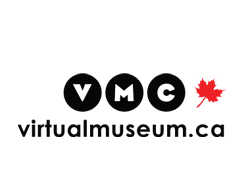Home | Major Sporting Events | Brier
Webisode Macdonald Brier Tobacco Tin
Video Transcript
[Narrator - Rylan Strachan]
[Image of Brier tin]
Dated to the 1920's, this Brier tin represents the community driven nature of curling and shifting attitudes about tobacco sponsorship and athletics.
[Images of early immigrants to Canada]
In the early 1800's, Scottish immigrants brought curling to Canada. Curling provided an activity perfect for the Canadian climate. The popularity of curling grew as the completion of the railroad opened up settlement in Western Canada. Curling clubs forged a sense of camaraderie and belonging to a community.
[Images of early curling and curling rocks]
Without sponsorship from the Macdonald Tobacco Company of Montreal, the first Men's National Curling Championship would not exist. President David Stewart bought thousands of granite curling rocks to entice Quebec curlers to stop using iron curling rocks.
[Image of 1927 Brier team]
In 1927, the first Brier featured eight teams and the event was held at the Granite Club in Toronto.
[Images of curlers, Richardson rink wearing curling sweaters with heart patches]
Sponsorship from tobacco companies was integral to the success of many sporting events, including the Brier. The Brier was named after a brand of pipe tobacco produced by Macdonald's at the time. The heart shaped patches awarded to tournament winners resembled the small tin heart on Macdonald tobacco plugs and tins.
[Images of curlers, curling patches and programs]
However, 1977 marked the end of an era. Macdonald Tobacco withdrew their 50-year sponsorship of the Brier under heavy pressure from the Canadian government's anti-tobacco movement. The 1979 Brier was their final event.
[Images of Brier competitions]
Curling is deeply rooted in Canada's past and today continues to bring together people of all ages.
Previous Next


